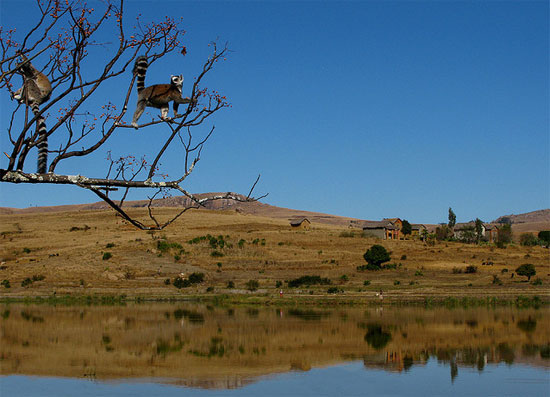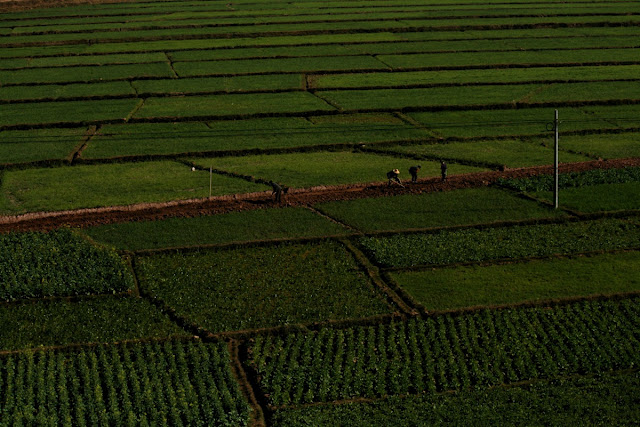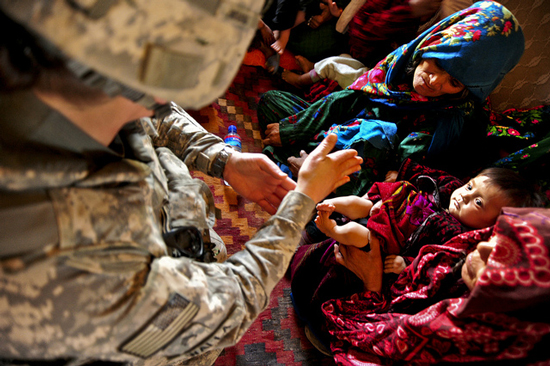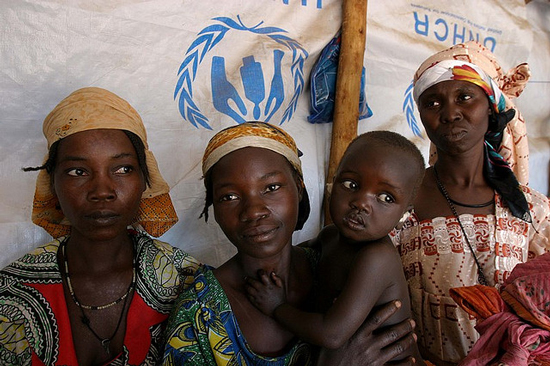-
Youth Bulge, Demography-Security Dialogue, and NATO
PRB Discussion on Population and National Security
›April 14, 2011 // By Schuyler NullThe Population Reference Bureau (PRB) held an online discussion this week with demographer Jennifer Dabbs Sciubba of Rhodes College on the topic of “Population and National Security.” On tap were questions on sex ratios, youth bulge, the definition of “national security,” whether the United States should be giving population and health-related advice, and other demographic security topics. Click through to PRB for the full transcript, or check out some select questions from ECSPers Richard Cincotta, Geoff Dabelko, and Schuyler Null below:
Richard Cincotta: Jennifer, my concern is with the lack of specificity that seems inherent in the youth bulge model in terms of civil and ethnic conflict. In other words, the highest probability of civil conflict (often protracted) is associated with very young populations – the Afghanistan, Iraq, sub-Saharan African situations. But, there is also a situation that arises among populations that are demographically somewhat older that is associated with democratization (i.e., the North African situation). These seem to have been conflated by the press and political scientists, yet they are demographically and politically very different cases. Any thoughts on how to recognize these and separate them?Jennifer Dabbs Sciubba: Rich, I think that until we have a stronger theoretical foundation for understanding the conditions under which a “youthful” population leads to civil conflict (very young pop) or democracy (slightly older pop) it will be hard to relay the difference in these two structures to non-experts. The democratization connection, in particular, needs to be refined to move firmly away from correlation and into causation. Right now, it seems to me that we give the same theoretical reasoning to both conflict and democratization (motive, cohort crowding). Do you agree?
Geoff Dabelko: Is the security community, so accustomed to framing issues as threats, internalize your messages about opportunity? Is there a recognition that low cost interventions such as provision of voluntary family planning services could be part of a holistic sustainable security approach? What are the steps that would need to happen to gain more adherents to this perspective?
(Editor: Read more discussion between Cincotta and Sciubba here and here)Sciubba: I’m sorry to say, but no, not really. The positive perspective does not resonate much because most in defense and intelligence are tasked with imagining the worst-case scenario. Opportunities and happy stories just do not fit in this paradigm (or even most of their job descriptions). I’ve tried to figure out what needs to happen to get them to pay attention to prevention, and the only place I see some chance of breaking through is in discussing Afghanistan. Many realize the challenges posed by Afghanistan’s young and growing population and there is some recognition that family planning may be relevant there. I think that for a paradigmatic shift to occur, it would have to be top-down – the vision of the President, Secretary of Defense, etc.
Dabelko: What would be the benefits of demographers and population experts taking more seriously a dialogue with the security community? Your book shows why security sector actors should pay attention to demography. Why should demographers pay attention to security?Sciubba: Some in the security community don’t necessarily understand the assumptions behind demographic projections or other aspects of the data, which means they sometimes misuse the info or distrust it and discard it all together. I also think that scholars of any discipline have a responsibility to understand how their work is being used.
Dabelko: What will be the subject of your next book?Sciubba: I’ll be returning to the politics of population aging. I’m particularly interested in comparing how different regime types have dealt with these issues, including not just Western European states, but also states like Singapore and Russia.
Schuyler Null: There’s been a lot of talk about how aging populations in Europe will affect defense sectors there, in terms of shifting budget priorities. But there’s also the aspect of how aging might affect European decision-making processes when it comes to foreign intervention (perhaps less willing put boots on the ground, stay for long, etc.).
Can you speak to how aging might affect the decision-making process and behavior of European countries when it comes to conflict in the future? How might aging affect the operation of NATO or the UN?Sciubba: Isn’t France a puzzle right now given your question? France, a low fertility country with an aging population and HUGE challenges ahead in terms of paying for entitlements to seniors, has recently shown a greater willingness to contribute to military missions. There is no doubt that aging states in Europe will be under strain trying to meet their promises to seniors and also maintain defense. But, European states still feel that there are sufficient threats in the world to warrant maintaining a military. They are trying to reduce redundancies among themselves and increase their efficiency – great cost-saving measures. Technology can compensate a bit as well. I think European states are willing to use their militaries when the threat is sufficient. Aging, however, may raise the threshold for what qualifies as “sufficient” and US-European opinions on what qualifies may increasingly diverge.
See the full transcript of questions and Sciubba’s responses at the Population Reference Bureau. -
Madagascar, Past and Future: Lessons From Population, Health, and Environment Programs
›In Madagascar, “today’s challenges are even greater than those faced 25 years ago,” said Lisa Gaylord, director of program development at the Wildlife Conservation Society. At an event at the Woodrow Wilson Center on March 28, Gaylord and her co-panelists, Matthew Erdman, the program coordinator for the Population-Health-Environment Program at Blue Ventures Conservation, and Kristen Patterson, a senior program officer at The Nature Conservancy, discussed the challenges and outcomes of past and future integrated population, health, and environment (PHE) programs in Madagascar. [Video Below]
Nature, Health, Wealth, and Power
Gaylord, who has worked in Madagascar for nearly 30 years, gave a brief history of USAID’s activities on the unique island, which she called a “mini-continent.” She used the “nature, health, wealth, and power” framework to review the organization’s environment, health, and livelihoods programs in Madagascar and their results. Governance, she said, is the centerpiece of this framework, but this piece “maybe didn’t have an adequate foundation” in Madagascar to see the programs through the political crisis.
Though its programs started at the community level, Gaylord said USAID’s objective was to scale up to larger levels. “You can’t always work on that level and have an impact,” she said, and there was “tremendous hope” in 2002 for such scaling up when Madagascar elected a new president, Marc Ravalomanana.
Unfortunately, changes in funding, a lack of economic infrastructure, and poor governance forced development programs to scale down. After President Ravalomanana was overthrown in a military coup in 2009, the situation got worse – the United States and other donors pulled most funding, and only humanitarian programs were allowed to continue.
“What worries me is that I think we have gone back” to working on a village level, Gaylord said. “We want to go up in scale, and I think that we felt that we could in Madagascar, but that’s where you have the political complexities that didn’t allow us to continue in that direction.”
Going forward, Gaylord said that it is important to maintain a field-level foundation, take the time to build good governance, and maintain a balance in the funding levels so that no one area, such as health, dominates development activities.
Living With the Sea
Based in southwestern Madagascar, the Blue Ventures program began as an ecotourism outfit, said Erdman, but has since grown to incorporate marine conservation, family planning, and alternative livelihoods. One of its major accomplishments was the establishment of the largest locally managed marine protection area in the Indian Ocean, called Velondriake, which in Malagasy means “to live with the sea.” This marine area covers 80 kilometers of coastline, incorporates 25 villages, and includes more than 10,000 people. The marine reserves for fish, turtles, and octopus, as well as a permanent mangrove reserve, protect stocks from overfishing.
One of the biggest challenges facing the region is its rapidly growing population, which threatens the residents’ health and their food security, as well as the natural resources on which they depend. More than half the population is under the age of 15 and the infant and maternal mortality rates are very high, Erdman explained. Blue Ventures, therefore, set up a family planning program called Safidy, which means “choice” in Malagasy.
“If you have good health, and family size is based on quality, families can be smaller and [there will be] less demand for natural resources, leading to a healthier environment,” said Erdman.
The region’s isolation and lack of education and health services are a challenge, said Erdman, but over the past three years, the contraceptive prevalence rate has increased dramatically, as has the number of clinic visits. The program uses a combination of clinics, peer educators, theater presentations, and sporting events, such as soccer tournaments, to spread information about health and family planning.
A Champion Community
“There is a long history of collaborative work in Madagascar,” Patterson said. Focusing on the commune (county) level, she worked in conjunction with USAID, Malagasy NGOs, and government ministries to try to scale up PHE programs in Madagascar’s Fianarantsoa province, which has a target population of 250,000 people.
“We essentially worked at two different levels,” said Patterson. At the regional level, a coordinating body for USAID and local partners called the “Eco-Regional Alliance” met monthly. The “Champion Commune” initiative, which worked at local levels, had three main goals, she explained:
Though working in such remote areas is expensive, and all non-humanitarian U.S. foreign aid has been suspended since the coup, Patterson hopes that development programs will return to Madagascar. Pointing to its vast rural areas, she stressed the importance of integrated efforts: “The very nature of multi-sectoral programs is that they have the highest benefit in the areas that are most remote. These are the areas where people are literally left out in the cold.”- Create a strong overlap with neighboring communes;
- Promote activities that benefited more than one sector (such as reforesting with vitamin-rich papaya trees); and
- Capitalize on the prior experiences of Malagasy NGOs in implementing integrated projects to help build up civil society.
Image credit: “Untitled,” courtesy of flickr user Alex Cameron.
Sources: The New York Times, Velondriake. -
In Search of a New Security Narrative: National Conversation Series Launches at the Wilson Center
›The United States needs a new national security narrative, agreed a diverse panel of high-level discussants last week during a new Wilson Center initiative, “The National Conversation at the Woodrow Wilson Center.”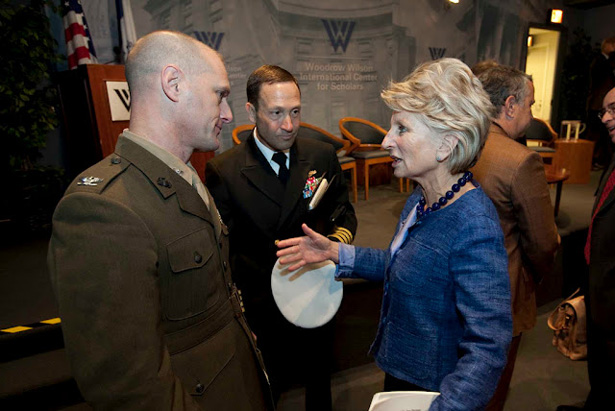
Hosted by new Wilson Center President and CEO Jane Harman and moderated by The New York Times’ Thomas Friedman, the inaugural event was based on a white paper by two active military officers writing under the pseudonym “Mr. Y” (echoing George Kennan’s “X” article). In A National Strategic Narrative, Captain Wayne Porter (USN) and Colonel Mark Mykleby (USMC) argue that the United States needs to move away from an outmoded 20th century model of containment, deterrence, and control towards a “strategy of sustainability.” [Video Below]
Anne-Marie Slaughter of Princeton University, who wrote the white paper’s preface, summarized it for the panel, which included Brent Scowcroft, national security adviser to President Ford and President H.W. Bush; Representative Keith Ellison (D-Minn.); Steve Clemons, founder of the American Strategy Program at the New America Foundation; and Robert Kagan, senior fellow for foreign policy at the Brookings Institution.Framing a 21st Century Vision
We can no longer expect to control events, but we can influence them, Slaughter said. “In an interconnected world, the United States should be the strongest competitor and the greatest source of credible influence – the nation that is most able to influence what happens in the international sphere – while standing for security, prosperity, and justice at home and abroad.”
“My generation has had our whole foreign policy world defined as national security,” said Slaughter, “but ‘national security’ only entered the national lexicon in the late 1940s; it was a way of combining defense and foreign affairs, in the context of a post-World War II rising Soviet Union.”
As opposed to a strategy document, their intention, write Porter and Mykleby, was to create a narrative through which to frame U.S. national policy decisions and discussions well into this century.
“America emerged from the Twentieth Century as the most powerful nation on earth,” the “Mr. Y” authors write. “But we failed to recognize that dominance, like fossil fuel, is not a sustainable source of energy.”It is time for America to re-focus our national interests and principles through a long lens on the global environment of tomorrow. It is time to move beyond a strategy of containment to a strategy of sustainment (sustainability); from an emphasis on power and control to an emphasis on strength and influence; from a defensive posture of exclusion, to a proactive posture of engagement. We must recognize that security means more than defense, and sustaining security requires adaptation and evolution, the leverage of converging interests and interdependencies. [italics original]
Prosperity and Security a Matter of Sustainability
The “Mr. Y” paper is similar in some respects to other strategic documents that have promoted a more holistic understanding of security, such as the State Department’s Quadrennial Diplomacy and Development Review, which was partially authored by Slaughter during her time in State’s Policy Planning Office. But there’s a markedly heavy focus on economics and moving beyond the “national security” framework in Porter and Mykleby’s white paper. They outline three “sustainable” investment priorities:
“These issues have come in and out of the security debates since the end of the Cold War, but they have not been incorporated well into a single national security narrative,” Geoff Dabelko, director of the Wilson Center’s Environmental Change and Security Program, told The New Security Beat. “This piece is a positive step toward achieving a coherent and inclusive national security narrative for the United States.”- Human capital: refocus on education, health, and social infrastructure;
- Sustainable security: use a more holistic, whole-of-government approach to security; essentially, expand the roles of civilian agencies and promote stability as much as ensuring defense; and,
- Natural resources: invest in long-range, sustainable management of natural resources, in the context of expanding global demand (via population growth and consumption).
To provide a “blueprint” for this transition, Porter and Mykleby call for the drafting of a “National Prosperity and Security Act” to replace the national security framework laid by the National Security Act of 1947 (NSA 47) and followed by subsequent NSAs.A New Geostrategic Model?
The panel unanimously praised the white paper’s intentions, if not its exact method of analysis and proposed solutions. All agreed that globalization and technology have helped create a more interconnected and complex world than current foreign policy and national security institutions are designed to deal with. Scowcroft called the 20th century “the epitome of the nation-state system” and said he expects an erosion of nation-state power, especially in light of integrated challenges like climate change and global health.
Kagan disagreed, saying he’s less convinced that the nation-state is fading away. “If anything, I would say since the 1990s, the nation-state has made a kind of comeback,” he said, adding that the paper lacks “a description of how the world works, in the sense of ‘do we still believe in a core realist point that power interaction among nation states is still important?’” In that sense, he said, “I’m not at all convinced we’ve left either the 20th century or the 19th century, in terms of some fundamental issues having to do with power.”
“I think there are three things that really are new,” said Slaughter. “The first [is the] super-empowered individual…the ability of individuals to do things that only states could.” We saw that with 9/11, with individuals attacking a nation, and we’re seeing that with communications as well, she said. “I can tell you, Twitter and the State Department’s reporting system, they’re pretty comparable and Twitter’s probably ahead, in terms of how much information you can get.”
Second, there is a “whole other dimension of power that simply did not exist before and that is how connected you are,” Slaughter said. “The person who is the most connected has the most power, because they’re the person who can mobilize, like Wael Ghonim in Egypt.”
Third, there are a greater number of responsible stakeholders. “What President Obama keeps telling other nations is ‘you want to be a great power? It’s not enough to have a big economy and a big army and a big territory, you have to take responsibility for enforcing the norms of a global order,’” Slaughter said. Qatar’s willingness to participate in the international community’s intervention in Libya, she said, was in part an example of a country responding to that challenge and stepping up into a role it had not previously played.
These new dimensions to power and security don’t entirely replace the old model but do make it more complex. “It’s on top of what was,” Slaughter said, and “we have to adapt to it.”
Photo Credit: Colonel Mark Mykleby (USMC), Captain Wayne Porter (USN), and Wilson Center President and CEO Jane Harman, courtesy of David Hawxhurst/Wilson Center. -
Watch: Elizabeth Leahy Madsen Explains the Demography-Civil Conflict Interface in Less Than Two Minutes
›April 12, 2011 // By Schuyler Null“We know that historically, as well as in the present, countries that have very young age structures – those that have youthful and rapidly growing populations – have been the most vulnerable to outbreaks in civil conflict,” said Elizabeth Leahy Madsen, senior research associate at Population Action International, in an interview with ECSP. “It’s not a simple cause and effect relationship, but we think that demographic trends and pressures can exacerbate underlying conditions.”
-
John Warburton, China Environment Series
UK Helping to Relieve Climate-Related Stress on China’s Agriculture
›The UK and China have been working together since 2001 to better understand how China is going to be impacted by climate change, particularly in the agriculture sector. But understanding must also lead to action, with adaptation needing to be integrated into the development process at both national and local levels. This work, which is ongoing, will increasingly provide a model for how to approach adaptation in other countries.
In my opinion, this work has also contributed to the realization among top-level Chinese officials that it is important to take global action on climate change as part of the international negotiation process; until very recently, most of the international engagement with China has focused on mitigation, with the result that the very real and urgent challenges that China faces in regards to its own adaptation needs have been sidelined.
Another Stressor for Chinese Agriculture
China’s Polices and Actions for Addressing Climate Change, issued in October 2008, state:The impacts of future climate change on agriculture and livestock industry will be mainly adverse. It is likely there will be a drop in the yield of three major crops — wheat, rice and corn; …enlarged scope of crop diseases and insect outbreaks; [and] increased desertification.
Even though assessing the likely impacts of climate change on crop yields is a complicated process, with some evidence showing that in some areas crops may benefit if agricultural technology can keep pace, the overall picture is grim for China.
Potential climate impacts are very worrying for a country which already faces so many other challenges within the agricultural sector, among them the facts that it has to feed nearly one quarter of the world’s population (1.3 billion people) with only seven percent of the world’s arable land; that it has only one-quarter of the world’s average per capita water distribution (one-tenth in large parts of northern China, which are heavily dependent upon agriculture); and that the agricultural land base is fast diminishing due to urbanization, industrialization, and the conversion of arable land to grasslands and forest.
Collaboration on Adaptation
Much of the evidence that supports the understanding of the likely adverse impacts on Chinese agriculture from climate change stems from collaborative work between the UK and China which started in 2001. A joint project, Impacts of Climate Change on Chinese Agriculture (ICCCA), has combined cutting-edge scientific research with practical development policy advice. Although national in scope, the project included pilot work to develop a stakeholder based approach to adaptation in the Ningxia region of northcentral China. ICCCA was successfully completed in December 2008. The UK-China collaboration is now continuing with a major new project which is going beyond agriculture and looking at additional socioeconomic sectors and geographic areas.
Continue reading in the China Environment Forum’s China Environment Series 11, from the Wilson Center. Other articles in the series can be found on CEF’s website.
John Warburton is a DFID senior environment adviser and is currently based in Beijing.
Photo Credit: “Field,” courtesy of flickr user totomaru. -
What “Lost” Cultures Can Contribute to Management of Our Planet
›
“Climate change is not a technical problem for indigenous people – it’s a psychological and spiritual problem,” said Wade Davis, explorer-in-residence at National Geographic, at a recent Wilson Center event, the third in a series co-sponsored by George Mason University and the Environmental Change and Security Program. Indigenous people are “being driven out of existence,” as climate change alters landscapes and weather patterns that they have carefully adapted to over centuries, he said. These people are not “failed attempts at being modern…they are unique answers to the fundamental question, ‘what does it mean to be human and alive?’” he said. “It behooves us to pay attention to how they choose to live upon the earth.” [Video Below]
-
Book Review: Envisioning a Broader Context to Security With ‘The Ultimate Weapon is No Weapon’
›The Ultimate Weapon is No Weapon: Human Security and the New Rules of War and Peace, by a career U.S. Army officer, Lieutenant Colonel Shannon Beebe, and Professor Mary Kaldor, director of the Centre for the Study of Global Governance at the London School for Economics, is the product of an intriguing partnership. Despite the fact that their respective professions have often displayed distrust and hostility toward one another, the coauthors’ combined perspectives have created a particularly prescient and non-partisan challenge to the security status quo.
Beebe and Kaldor add to the growing call to re-evaluate existing constructs of “national security” and to reconsider the roles of Western militaries and international aid agencies in the globalized 21st century world. In particular, they emphasize the urgent need for a more nuanced understanding of security that includes humanitarian considerations as an integral component in these institutions’ agendas. This “human security” is the right of all people to livelihoods, clean drinking water, nourishing food, and education and proper health care, in addition to a safe and secure place to live, free from the fear of personal crime and violence.
Such insecurity affects us all even if it does not directly result in open warfare. According to Misha Glenny in his 2009 book, McMafia, it is estimated that 20 percent of the global GDP is generated through criminal activities, which exploit the weak and the vulnerable on a global scale. It is difficult to say what role the traditional Western military can play under situations in which vast networks of tyranny through corruption are rapidly growing.
Historical and General Context
The Ultimate Weapon is No Weapon is a persuasive argument in favor of deconstructing the conventional credo of war that has dominated U.S. military theory since World War II. Beebe and Kaldor argue that the political and financial capital mined from the Greatest Generation significantly influenced the “state-against-state” model of the American military machine, and then helped perpetuate and sustain it. The United States’ Cold War experience reinforced the notion that the goal of security is to defeat a great enemy, preferably in open battle using the best available military hardware.
But, the authors ask, did such displays of military superiority and readiness actually accomplish the strategic goal of maintaining our security in today’s world? Did we perhaps narrow the definition of security too much, and in using the wrong tools, did we worsen the very problems we set out to solve?
Beebe and Kaldor provide ample evidence to suggest we have taken the narrow approach, from NATO’s involvement in Yugoslavia, to the debacle in Somalia, and the current conflicts in Afghanistan and Iraq. The authors are not simply out to criticize the military, but instead suggest that the lines that define nation-states today no longer hold the same power that they once did. Other forces at work, from economic globalization to climate change, must be recognized.
Definitions and Prescriptions for a Changing World
When civilians become targets of violence, their resilience is weakened, write Beebe and Kaldor, for a variety of reasons that are often difficult to ascertain without on-the-ground intelligence. For instance, is violence against civilians intended to provide opportunities for political gain by certain groups, or just cover up criminal behavior intended for monetary gain? In this kind of environment, where does the modern Western military machine fit, and how can international humanitarian institutions be more effective?
Beebe and Kaldor contend that instead of developing strategic operations focused on killing the enemy, the military should be focused instead on creating safe spaces for civilians:A human-security approach would emphasize bottom-up reconstruction of governance and justice systems, local security capabilities, and, of course, addressing poverty, education, and health. It would, as well, have to be part of a more global strategy for dealing with the transnational criminal networks, especially drug networks, that are nourished by and that nourish conflicts (p. 196).
Even if it is not the sole responsibility of the military to provide such resources, the authors argue, failure to recognize the importance of human security or to protect resources will ultimately increase our security risks.
An Unobtainable Utopia or Early Warning?
Undoubtedly, the problems that the authors describe are real; it is time to re-evaluate what kind of world we want to live in and how this might be achieved. What should we do if there is no legitimate state government to negotiate with, and yet there is clearly a violent and deadly situation, such as the 1994 genocide in Rwanda? Would the American people tolerate spending money on a military operation without there being any direct sign of imminent threat or danger to them, and without the ability to declare some sort of traditional military victory? Or would their reaction be the same as Neville Chamberlain’s to Czechoslovakia in 1938, that human security merely describes “a quarrel in a faraway country between people of whom we know nothing?”
The recent intervention in Libya is a case in point. Speaking on Meet the Press recently, Secretary of Defense Gates admitted that the country was of no vital interest to the United States, and instead defended spending money on military air strikes based upon humanitarian grounds. Despite the clear mandate from the UN, NATO, and the Arab League to respond to this human security crisis, there has clearly been little appetite in the United States to lead military interventions in Libya without an obviously defined motive of self-interest.
The difficulty lies in explaining that basic security and instability have grave consequences, even across great distances, and that addressing potential conflicts early prevents the need for making harder choices later on. The U.S. Department of State has tackled that difficult task in the recent Quadrennial Diplomacy and Development Review, which calls for greater focus on human security interventions as a way to avoid or mitigate future military conflicts.
Though a few of the solutions postulated in this book may seem overly idealistic to some, I would argue that Beebe and Kaldor’s ideas represent less a utopian vision than an early warning and plea for change in the years to come. Rather than succumbing to the easy temptation to fear globalization and the world outside our borders, we must learn to engage with and help create a thriving global civil community.
A must-read for a broad range of audiences, The Ultimate Weapon is No Weapon offers a historical and contemporary basis for envisioning a broader context to security and understanding that the “ultimate weapons of the twenty-first century are, in fact, not weapons in the military sense at all” (p. 202).
Tracy Walstrom Briggs is currently the Minerva Associate Chair for Energy and Environmental Security (USAF). She has worked with the Swedish Defense Forces (FOI) and the UN Environment Programme to facilitate more sustainable peacekeeping installations using rapid impact assessment tools. She was also a professor and associate chair for the Graduate Environmental Studies Program at California State University Fullerton.
Sources: HistoryVideos101, McMafia (Glenny), NBC, U.S. Department of Defense.
Photo Credit: “3-6 Soldiers Provide Medical Aid,” courtesy of flickr user expertinfantry. -
Working With the Private Sector to Improve Maternal, Newborn, and Child Health
Innovations From Development to Delivery
›“Challenging and dynamic partnerships [with the private sector] are difficult to pull together, but when you look at sustainability, impact, and effectiveness, they can also be great levers of change,” said Kari Stoever, senior advisor for global advocacy at the Global Alliance for Improved Nutrition (GAIN) at the Wilson Center on March 22. [Video Below]
Stoever was joined by panelists Laura McLaughlin, environmental engineer at Cascade Designs, Inc., Hugh Chang, director of special initiatives at the NGO PATH, and Laura Birx, senior food security and nutrition specialist at the U.S. Agency for International Development (USAID) for a discussion of the private sector’s role in developing innovative health technologies to increase access to safe water, prevent infectious diseases, and improve maternal health nutrition.
Collaborating to Provide Safe Water
“NGOs have different strengths and different perspectives from the private sector, and we’ve found an area where we can really complement each other,” said McLaughlin. Cascade Designs, Inc., collaborated with PATH to create a smart electrochlorinator, which produces a chlorine solution to purify water using just salt water and a simple battery, because “we wanted to make a bigger difference than we could do with philanthropy alone,” said McLaughlin.
“Products need to be designed specifically for the end user, particularly for women and children, who are often times left out of the design process,” said McLaughlin. Cascade’s smart electrochlorinator was designed with this in mind. One charged battery can treat up to 40,000 liters of water, 200 liters at a time. The device is easy to use, requires simple resources, is significantly more affordable than existing solutions, and lends itself to an entrepreneurial business model that can deliver safe water to small community households. The current prototype is being field-tested in 10 countries globally, with the aim of providing safe water in resource-poor communities while generating income for local entrepreneurs.
The PATH-Cascade partnership was successful in part because it combined “private-sector expertise in efficiency, cost-effectiveness, and meeting market demands” with knowledge about the health needs in developing countries, said McLaughlin. By “pushing each other to a common end goal, this partnership really multiplied our strengths.”
Engaging the Private Sector
“One of the reasons we work closely with the private sector…is because we recognize an efficiency of resource usage that comes with building bridges between the public sector and the private sector,” said Chang of PATH’s work with Cascade and others. Engaging the private sector to advance health technologies can complement PATH’s goals, like encouraging healthy behaviors and strengthening health systems, he said. “But, we are not averse to profits,” he added, stressing that partnerships with NGOs can be mutually beneficial. “We understand for this to be sustainable, these companies need to make a profit.”
PATH is working with the private sector to develop injection and vaccine technologies that “produce a product that not only benefits the recipient of the vaccine but also produces a revenue stream,” said Chang. The SoloShot, for example, is a low-cost, disposable syringe that locks after a single injection, preventing needle reuse and contamination that can increase the risk of HIV, hepatitis B, and other infections. To address the challenge of maintaining the proper refrigeration of vaccines in low-resource settings, private sector collaboration has helped to develop the vaccine vial monitor (a sticker that changes color when a vaccine has been exposed to too much heat) and to create more stable vaccine formulas that are less vulnerable to extreme temperatures. “By combining innovation with on-the-ground presence,” concluded Chang, “private sector engagement can be a powerful tool for global health.”
A “Win-Win Partnership”
“There is a tremendous role for the private sector to play in the intersection of agriculture and health as they relate to nutrition,” said Birx. Engaging the private sector can be a “win-win partnership,” she said. The Obama Administration’s hunger initiative, Feed the Future, for example, uses the resources, expertise, and innovation of the private sector to encourage sustainable, market-driven approaches to reducing poverty and food insecurity, said Birx.
USAID sees innovation as a “research-to-use continuum,” said Birx. “When we look at innovation, it’s not just about the development of a specific product, but about the entire system that goes around that product,” she added. New technologies must not only respond to a major development challenge in poor and rural communities but need to be affordable, culturally appropriate, gender sensitive, easy to use, and durable.
But solutions don’t have to be complicated. “Often times it’s about a really simple technology that can improve accessibility,” said Birx. The nevirapine pouch, for example, a simple foil packet that allows health care workers to give women single doses of nevirapine syrup, can reduce the risk of mother-to-child transmission of HIV by more than half.
“There’s a lot of excitement, but we need to do some serious work to capitalize on [it],” said Birx. Moving forward, health, development, and private-sector organizations must work together to create innovative financing mechanisms, build institutions in developing countries, and encourage enabling policy environments.
Sources: PATH.
Photo Credit: “Mission to Ouanda Djallé,” courtesy of flickr user hdptcar.
Yearly archive for 2011.
Show all posts



